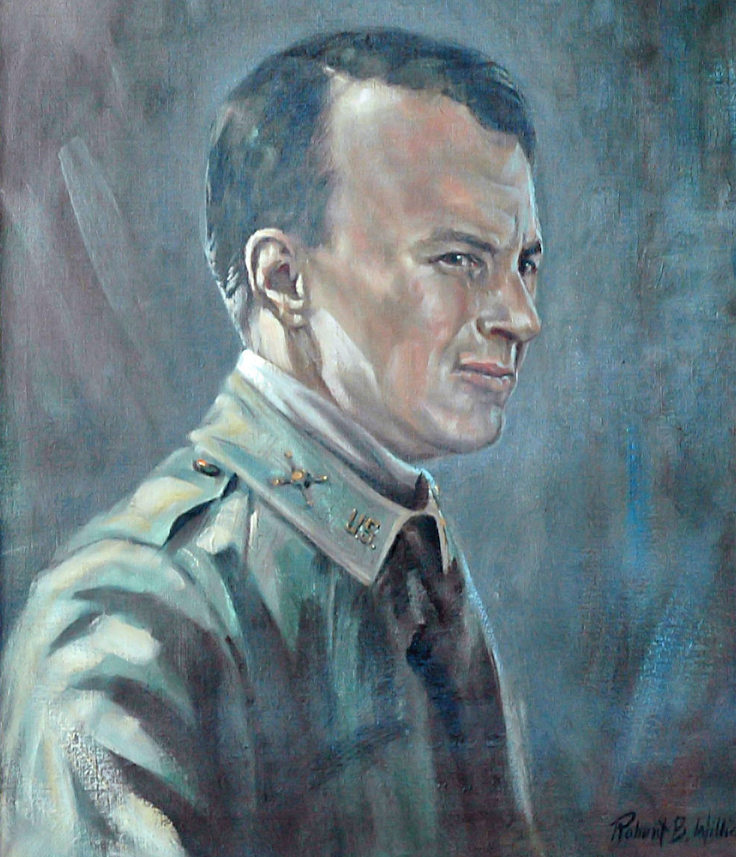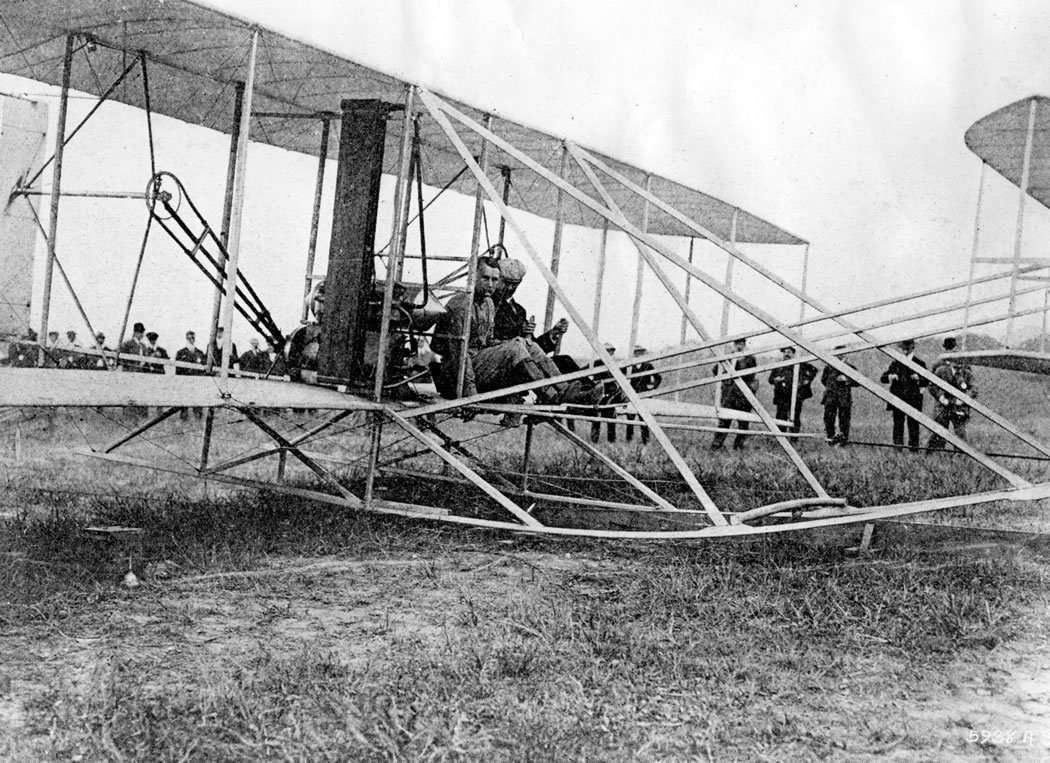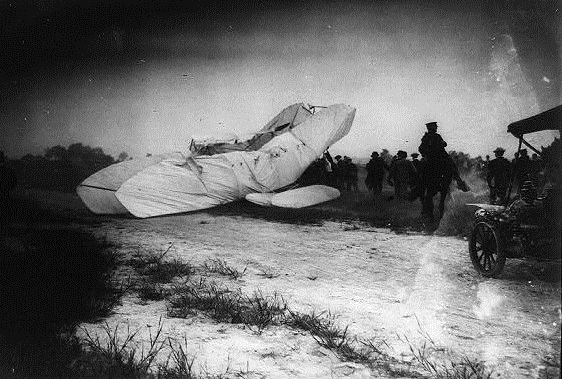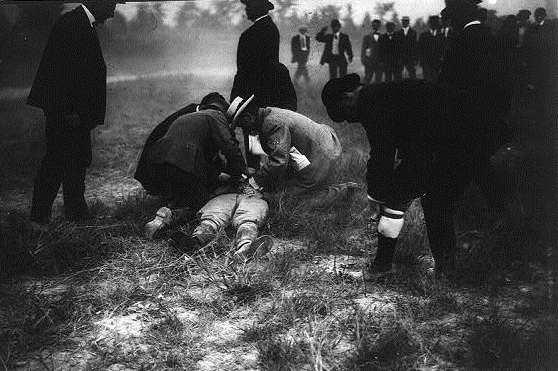
17 September 1908: Orville Wright brought his Wright Flyer to Fort Myer, Virginia to demonstrate it to the U.S. Army Signal Corps. A crowd of approximately 2,500 spectators had gathered to watch the flight.
Lieutenant Thomas Etholen Selfridge, Signal Corps, United States Army, wanted to ride along with Wright and asked to go first. Lieutenant George Sweet, U.S. Navy was scheduled for the first flight, but he and Wright agreed to let Lieutenant Selfridge go. The two men aboard the Wright Flyer made four circuits of the field approximately 150 feet above the ground. The starboard propeller broke and struck the wires supporting the rudder. As the rudder rotated sideways, it caused the airplane to pitch nose down.

Orville Wright later described the accident:
“On the fourth round, everything seemingly working much better and smoother than any former flight, I started on a larger circuit with less abrupt turns. It was on the very first slow turn that the trouble began. . . A hurried glance behind revealed nothing wrong, but I decided to shut off the power and descend as soon as the machine could be faced in a direction where a landing could be made. This decision was hardly reached, in fact I suppose it was not over two or three seconds from the time the first taps were heard, until two big thumps, which gave the machine a terrible shaking, showed that something had broken. . . The machine suddenly turned to the right and I immediately shut off the power. Quick as a flash, the machine turned down in front and started straight for the ground. Our course for 50 feet was within a very few degrees of the perpendicular. Lt. Selfridge up to this time had not uttered a word, though he took a hasty glance behind when the propeller broke and turned once or twice to look into my face, evidently to see what I thought of the situation. But when the machine turned head first for the ground, he exclaimed ‘Oh! Oh!’ in an almost inaudible voice.”

The Wright Flyer struck the ground and both men were seriously injured. Thomas Selfridge suffered a fractured skull. He underwent neurosurgery but died without regaining consciousness. Orville Wright had a broken leg, several broken ribs and an injured hip. He spent seven weeks in the Army hospital.
This was the first fatal accident involving an airplane. Lieutenant Thomas Etholen Selfridge was the first person to die in an airplane accident.

© 2015, Bryan R. Swopes